Cartier
The Centenarian
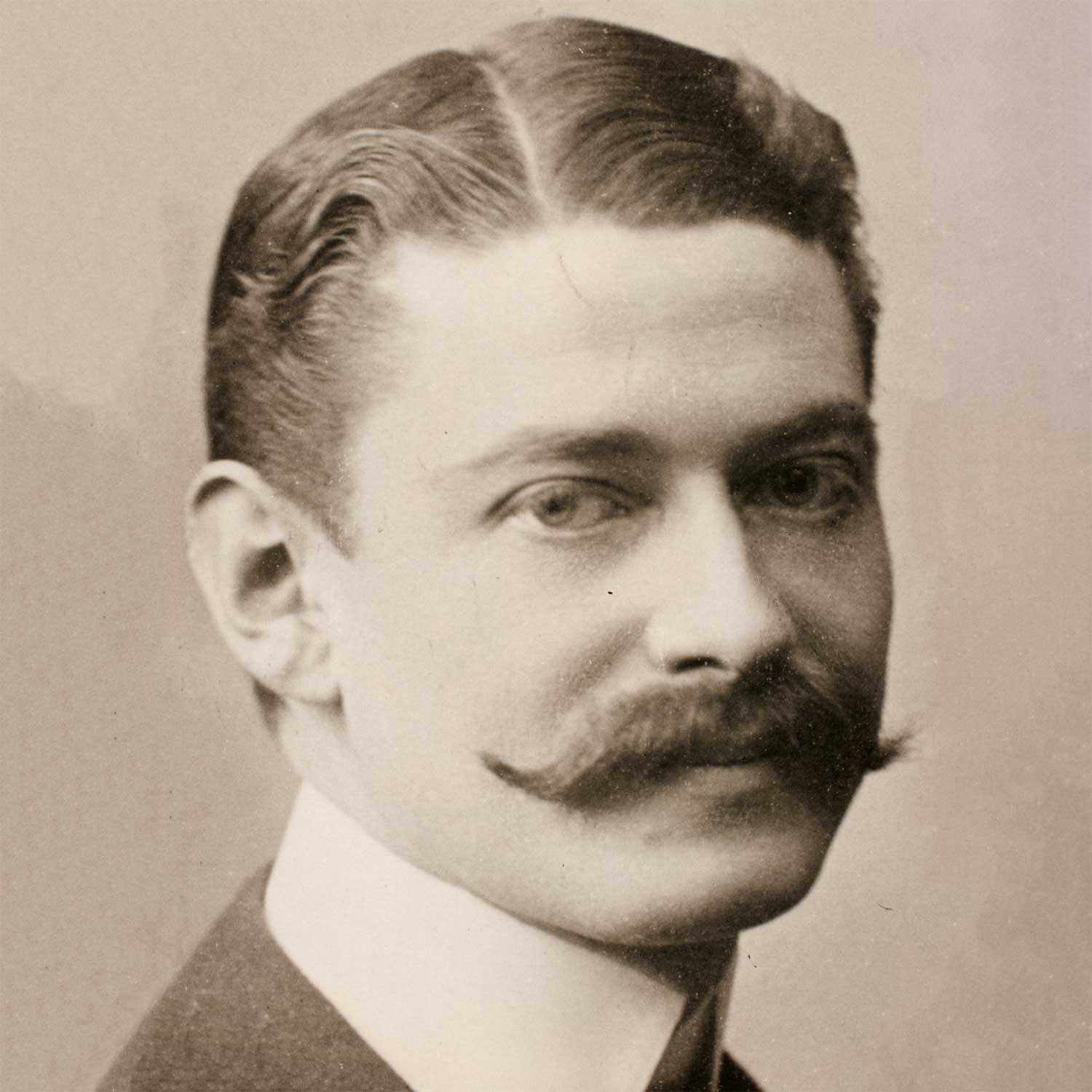
Portrait of Louis Cartier
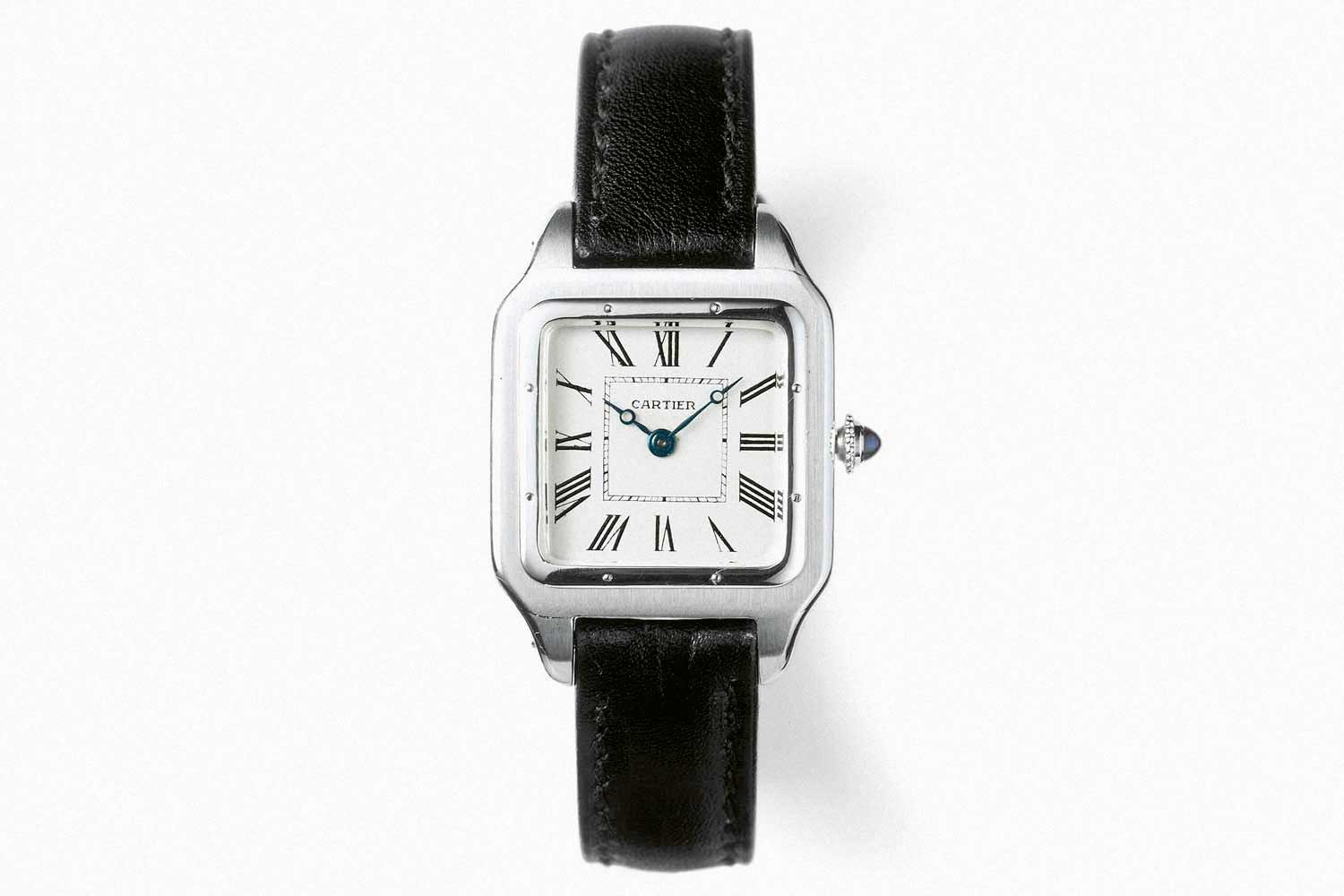
Cartier Santos-Dumont from 1916
The Roaring ’20s
Through 1919 and 1920, only six of the Tank Normale models were sold. By the early 1920s, wristwatches had become a standard accessory for fashion-conscious men, and the Cartier Tank saw several popular iterations to keep up with the trends. The world was fascinated by Asian heritage, and so a Tank Chinoise was created with lugs that resembled the architecture of a Chinese temple. The Cartier Tank enjoyed its first cinematic appearance when Rudolph Valentino insisted on wearing his Tank during the filming of The Son of the Sheik. Fred Astaire bought his Tank Cintrée in 1928, an elongated version with a gently curving case that was only released in limited editions and remains one of the rarest models today. Duke Ellington sported a Cartier Tank à Guichets as he packed the Cotton Club.
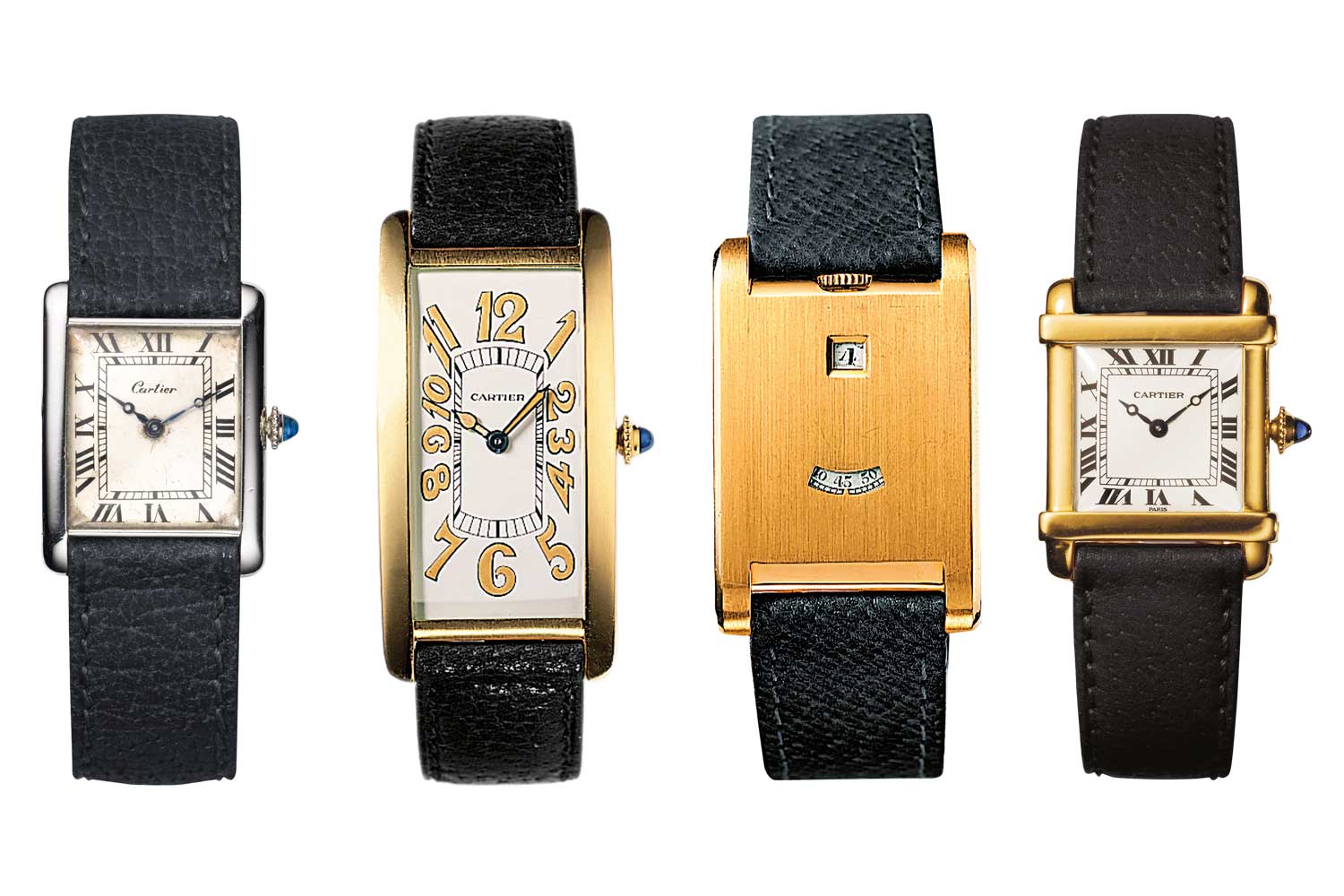
Above from left: Cartier Tank Louis Cartier from 1925; Tank Cintrée from 1929; Cartier Tank à Guichets; Tank Chinoise Depression.
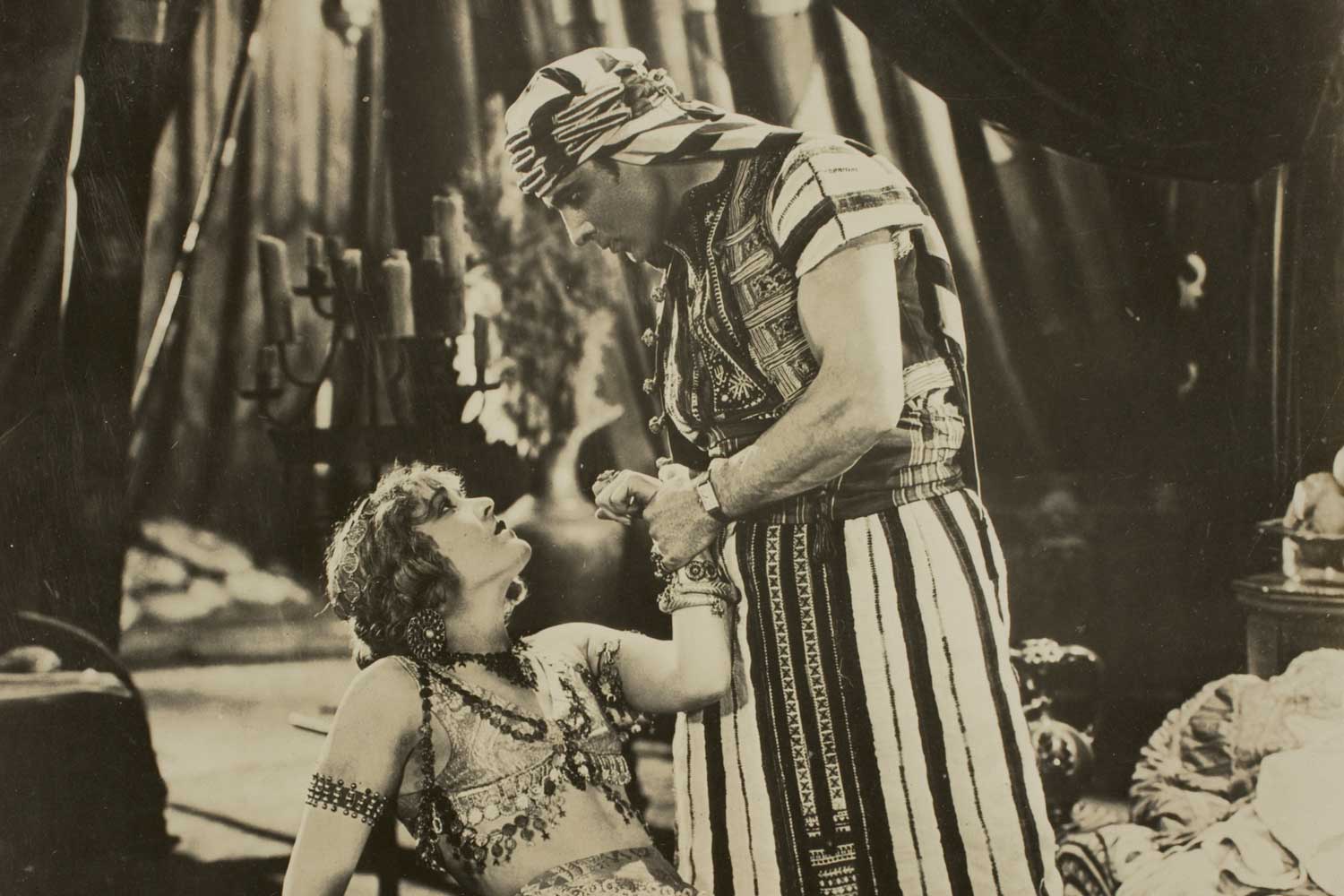
Vilma Banky and Rudolph Valentino in the 1926 film, The Son of the Sheik. Valentino insisted on wearing his treasured Cartier Tank during the filming
The 1930s and ’40s
Cartier released several new models through these decades including the Tank Basculante from 1932 that was created in response to the growing trend for robust sports watches. The Basculante was visually very different with its innovative mechanism that allowed the case to pivot by 360 degrees and nest into a second case for protection during strenuous sport.
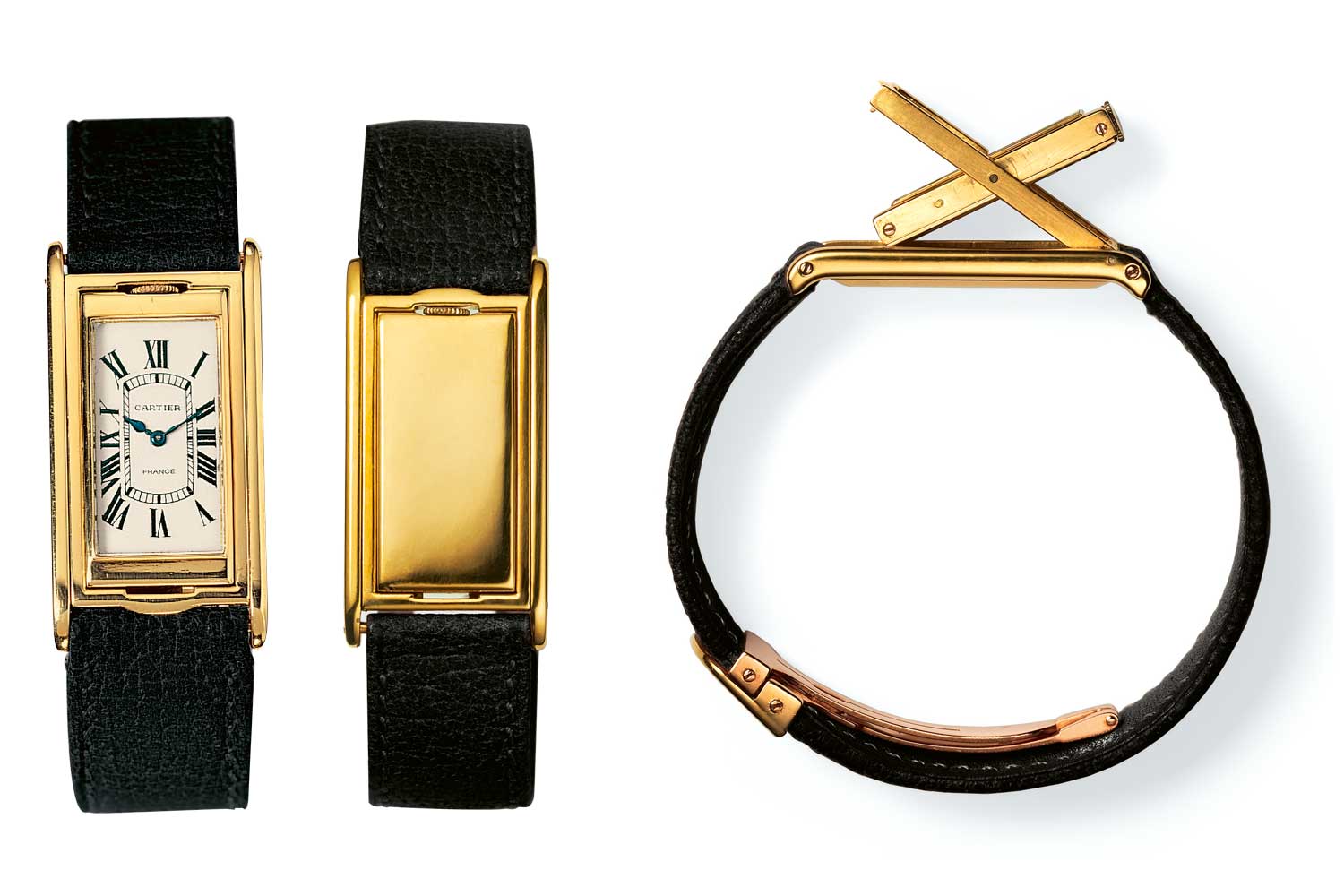
Cartier Tank Basculante in 1932. The innovative mechanism allowed the case to pivot by 360 degrees and nest into a second case for protection
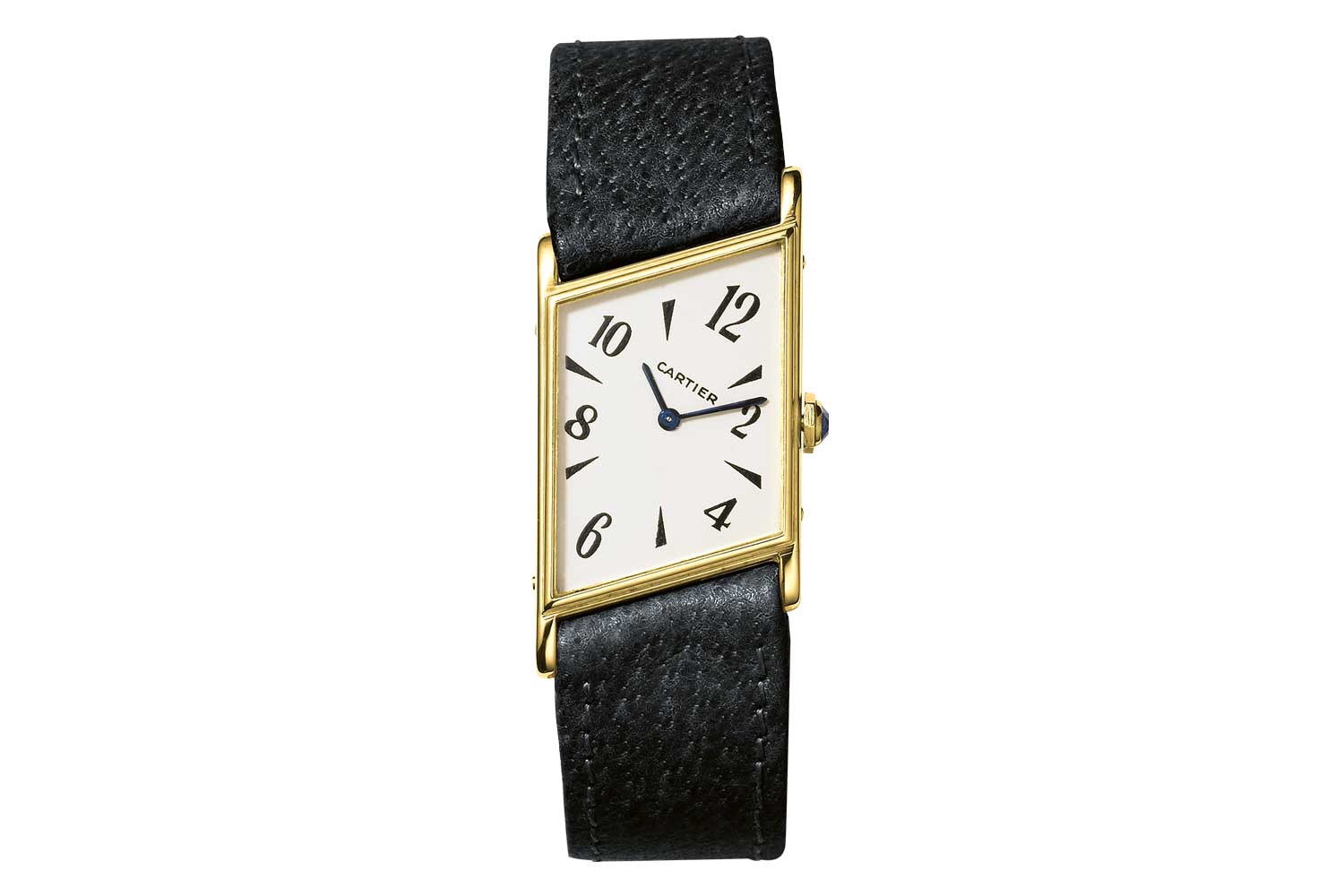
Tank Oblique
As the world recovered, Cartier began to introduce new models that experimented with their identity. The iconic railroad track shrank to a single line or disappeared altogether, and shapes grew heavier. Louis Cartier passed in 1942, and there followed a sustained decline in new variations for the Tank that would last several decades. Some notable exceptions were the Tank Rectangle of 1946 with its “thick” design and the Tank Carrée of 1944.
The ’50s to ’70s
The 1950s saw a resurgence in demand for the square Tanks of old as the popularity of the round wristwatch experienced a resurgence. The Cartier Tank became the favorite of those who wished to stand apart and display an independent spirit. As the ’60s and ’70s introduced social upheaval and a complete disruption to the rules of fashion, the Tank stayed true to its roots with great success. A variety of celebrities across all different walks of life continued to show loyalty to the classic timepiece, including Elizabeth Taylor, Muhammad Ali, Ingrid Bergman and Clark Gable.
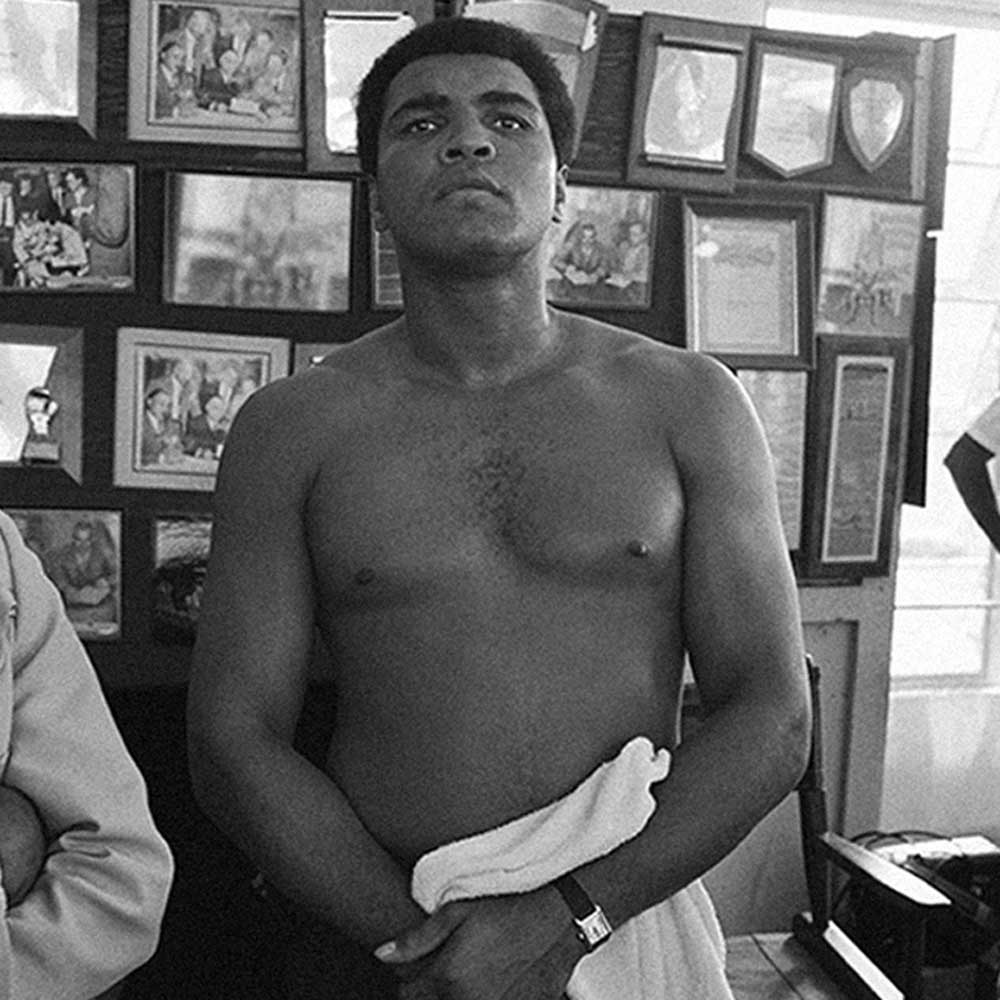
Muhammad Ali with his Cartier Tank
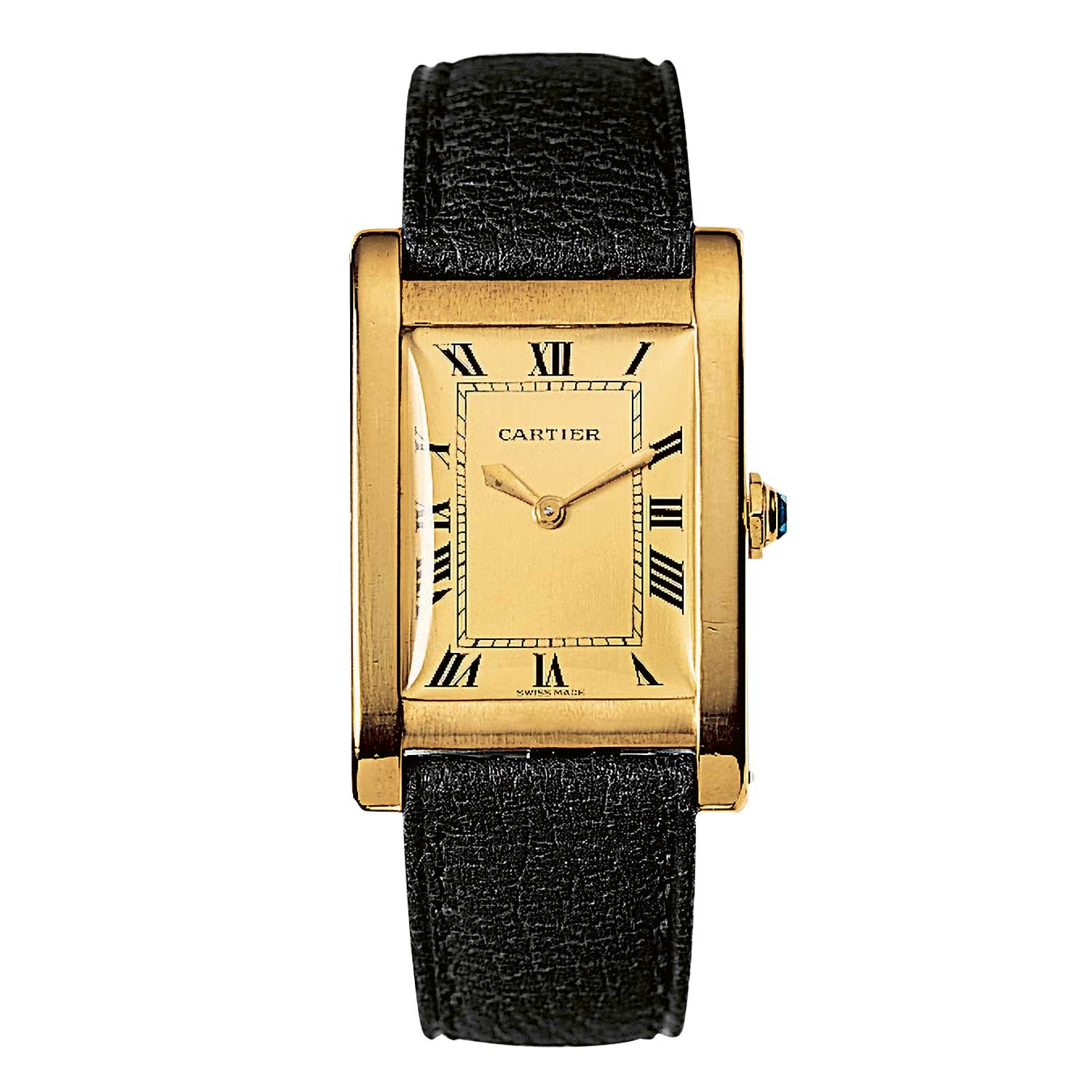
Cartier Tank Rectangle Broad
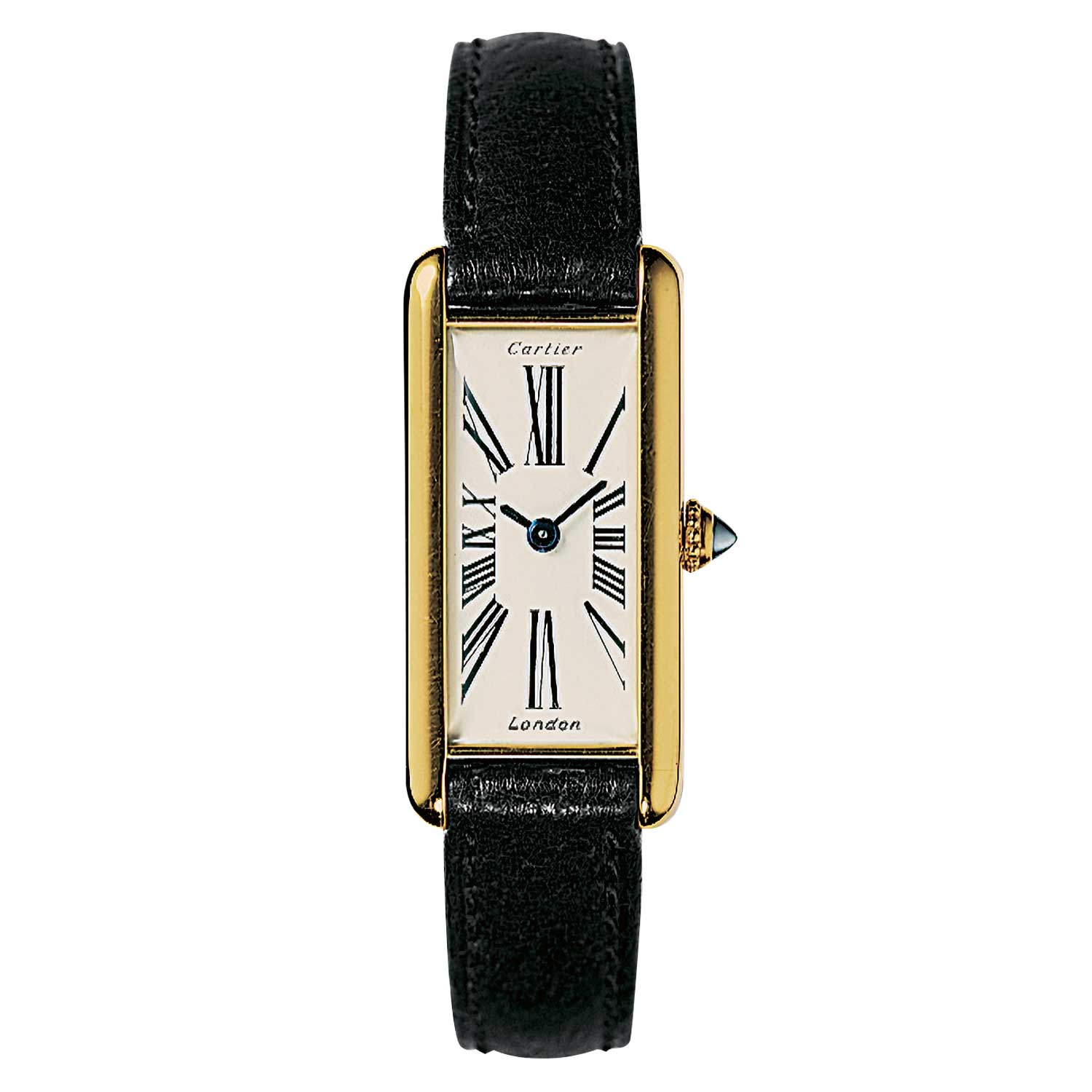
Tank Allongée
The Modern Era
In 1977, the quartz movement made its way into the Tank watch with the Tank Must de Cartier. The numerals disappeared entirely, and the familiar creamy white dial was replaced by a monotone lacquer in deep red and later blue, black and other colors. This model was exceptional for another reason as material changes allowed the price to drop into a range accessible by a whole new set of customers.
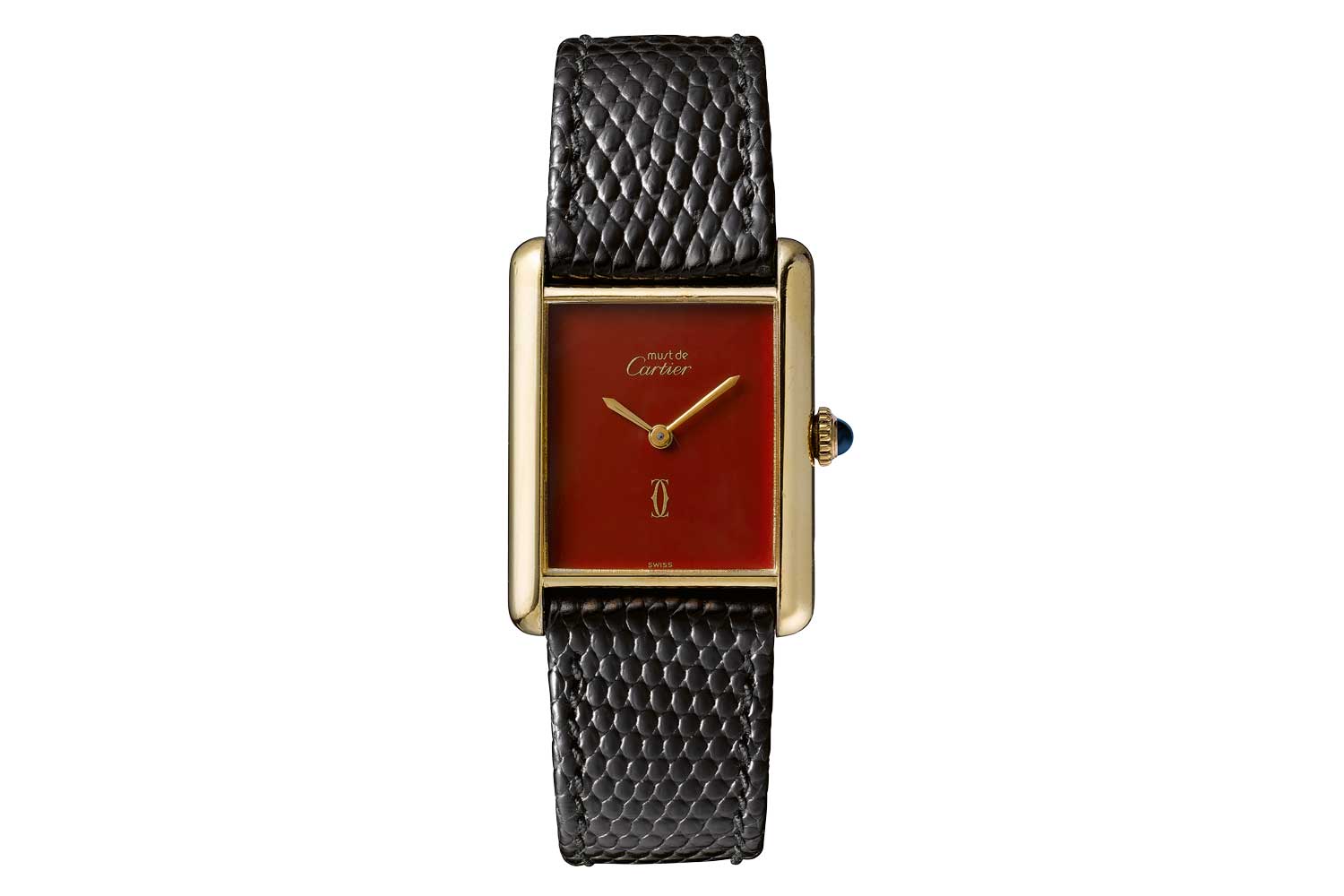
Must de Cartier Tank
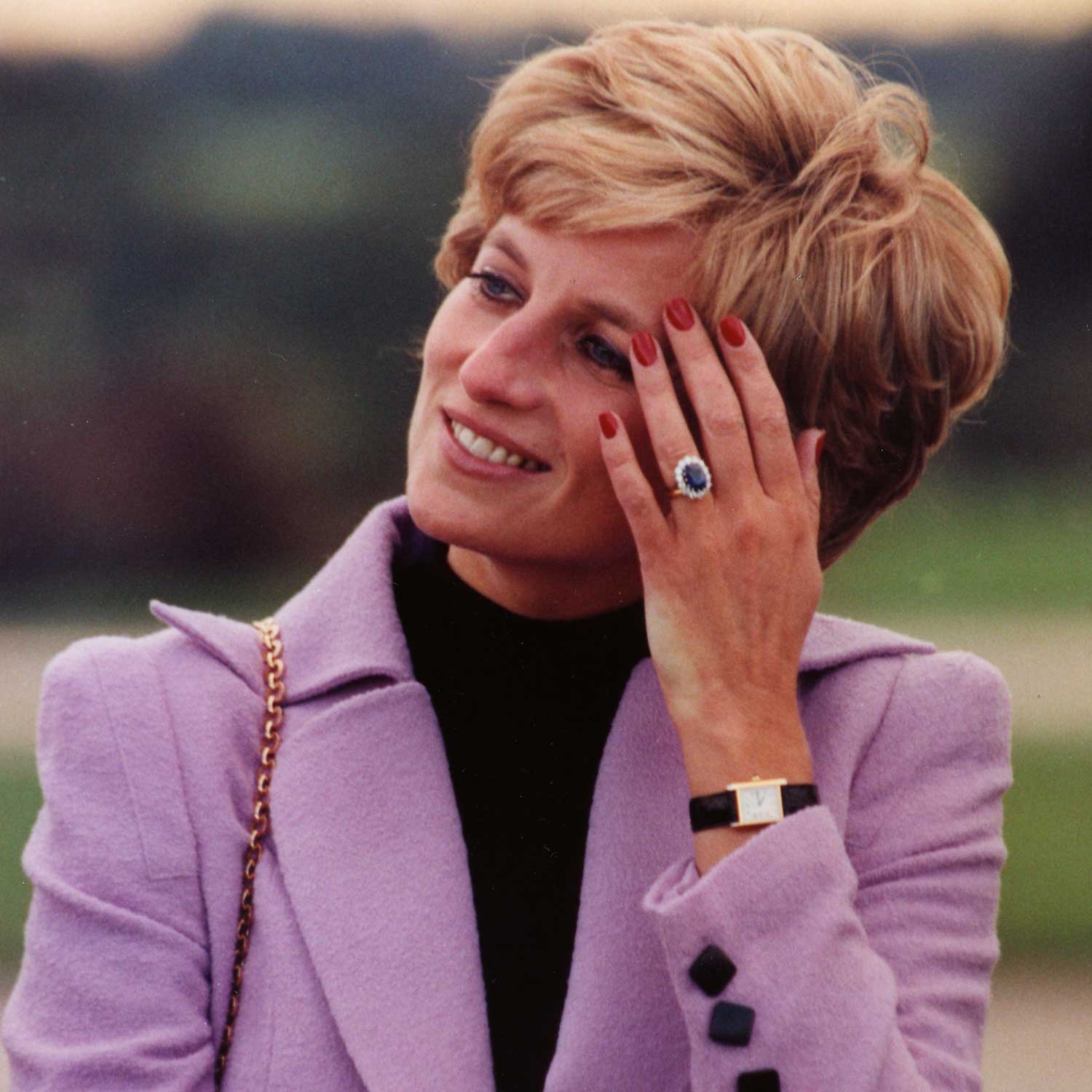
Princess Diana wearing her Cartier Tank
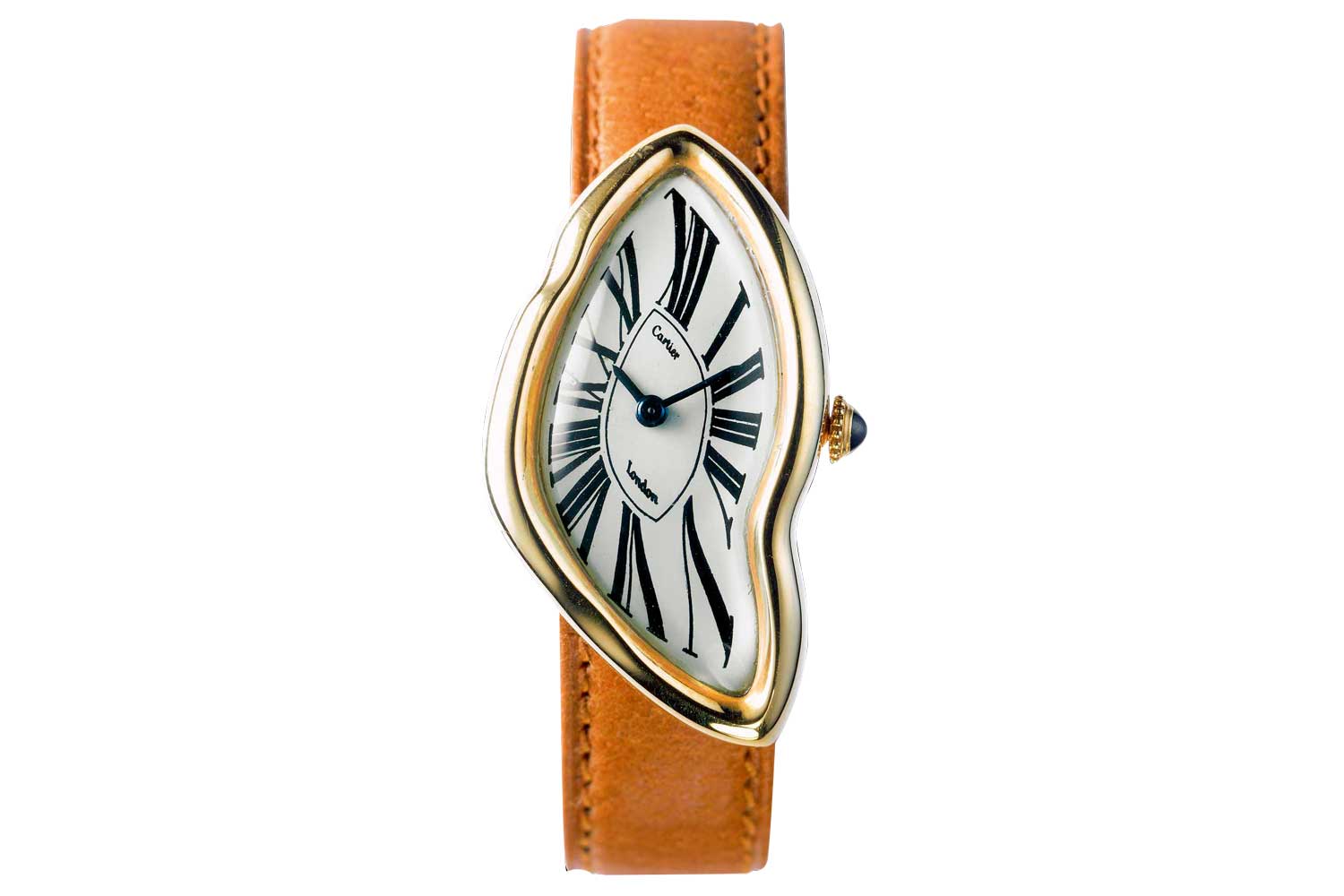
Cartier Crash London
“The must watches are part of the maison’s heritage and legend… They have withstood the test of time thanks to their instantly recognizable style, but also their excellent craftsmanship, which cartier applies to all its creations right down to the smallest detail.”
Pierre Rainero, Director of Image, Style and Heritage at Cartier
The 2021 Collection
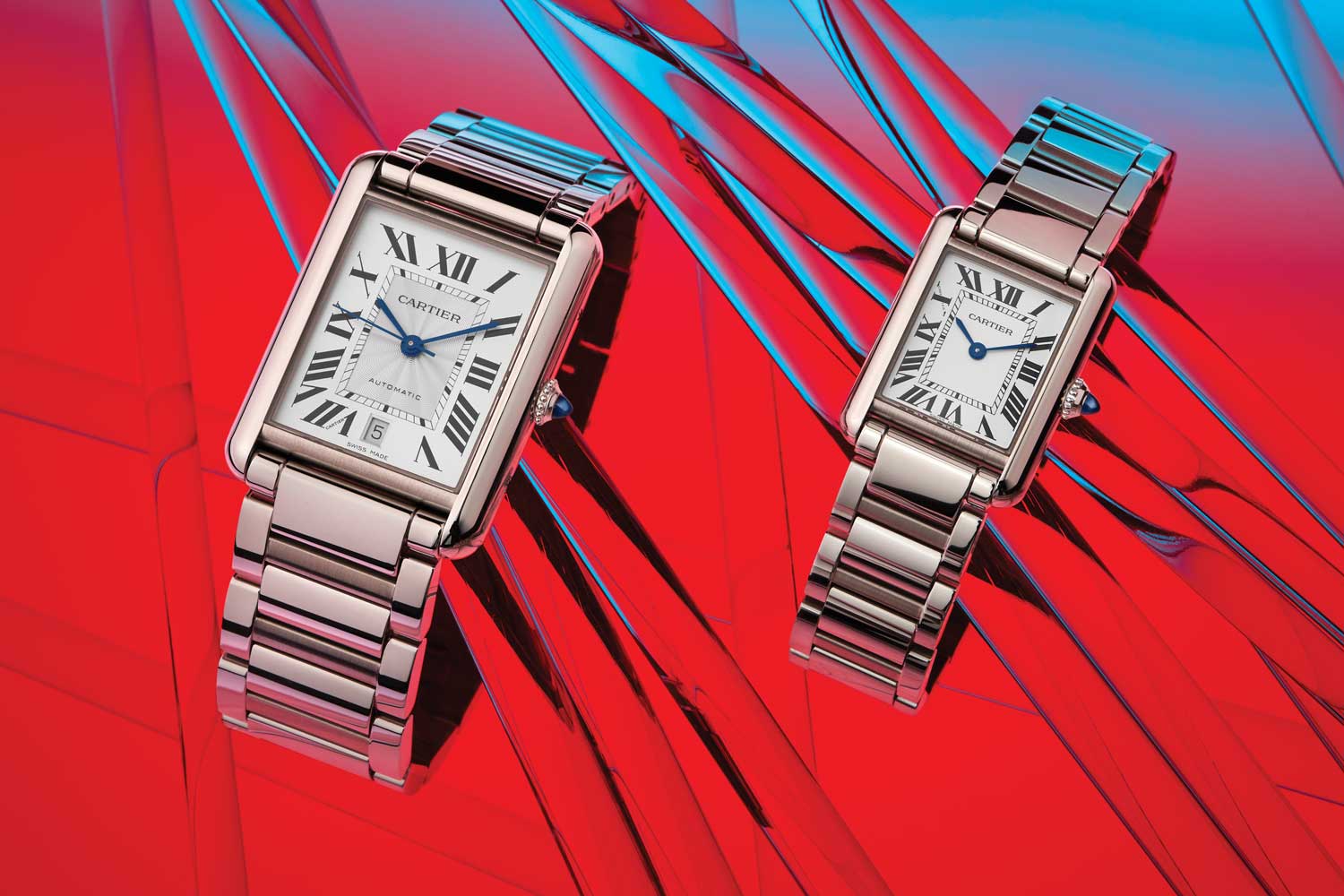
Tank Must, extra-large model with automatic winding caliber 1847 MC
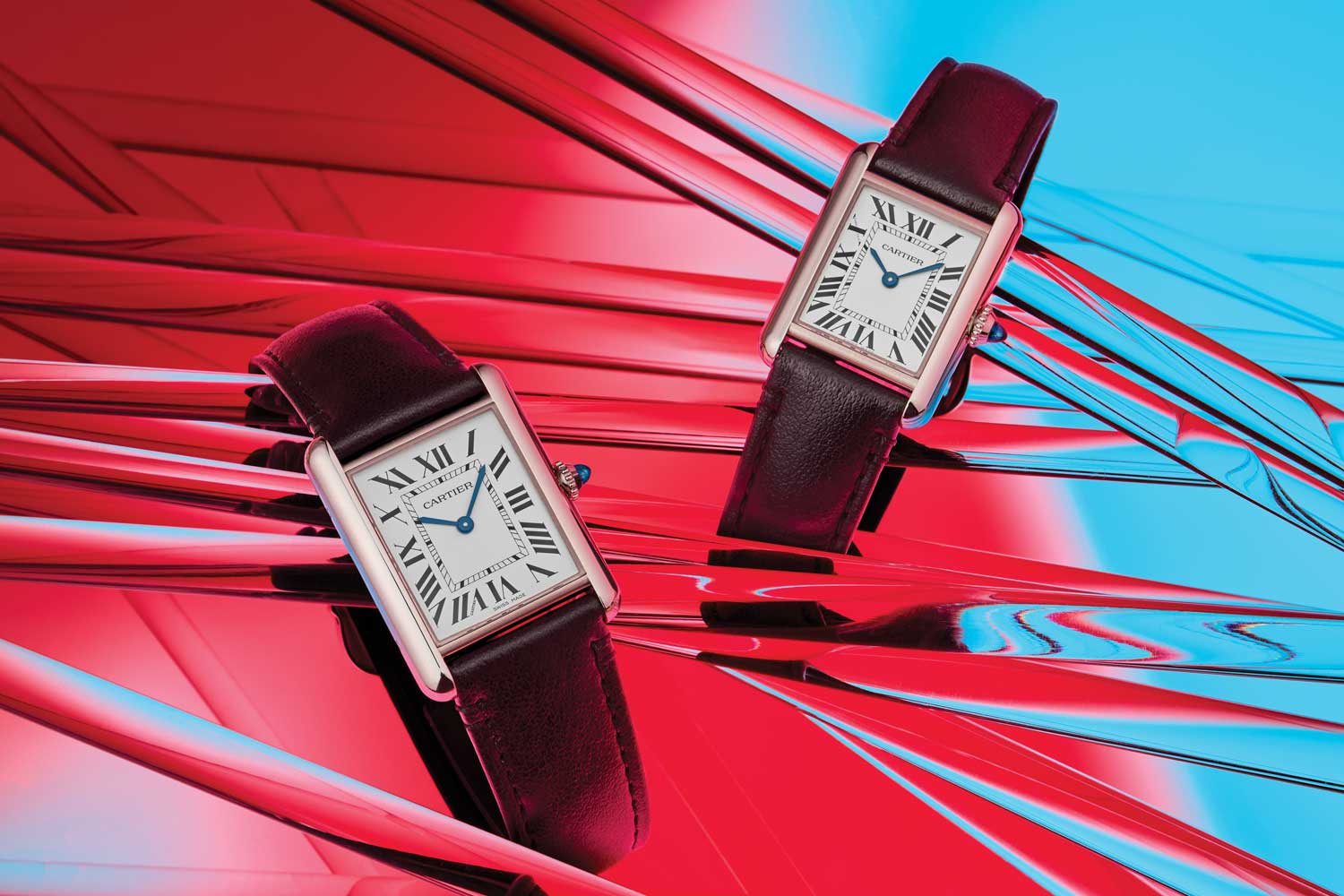
Tank Must, large and small models, powered by SolarBeat photovoltaic movement
With the renewal of our fascination with all things ’80s and ’90s, the Tank Must is also paying homage to the successful monochromatic models of 1977 with three new models that harken back to the red, blue and green lacquered dials without ornamentation or markers. While they are powered by a quartz movement, the minimalist monochromatic colors with matching leather straps, at an entry-level pricing, make them a popular model in the Tank series.
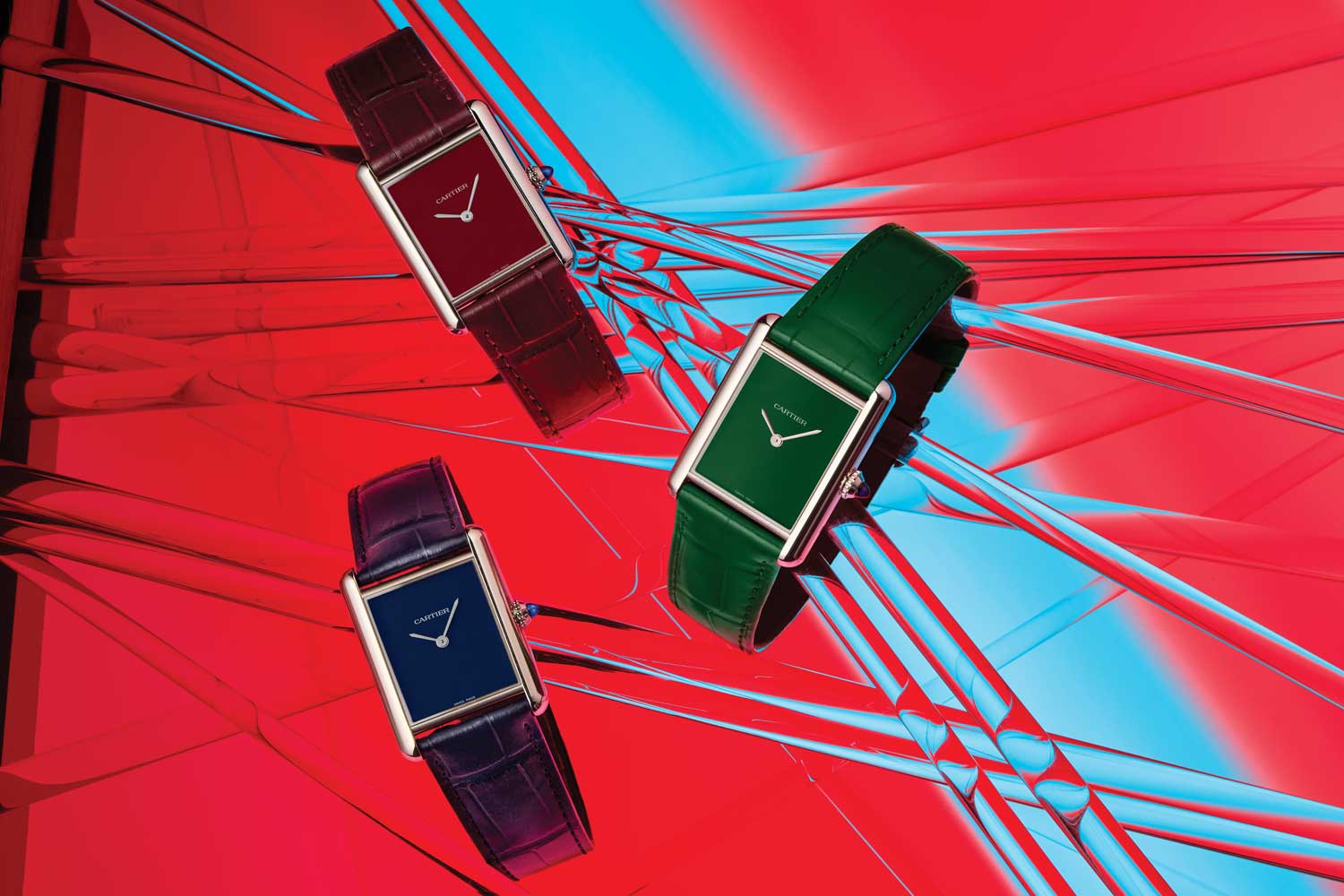
Cartier Tank Must 2021 collection in red, green and blue colorways
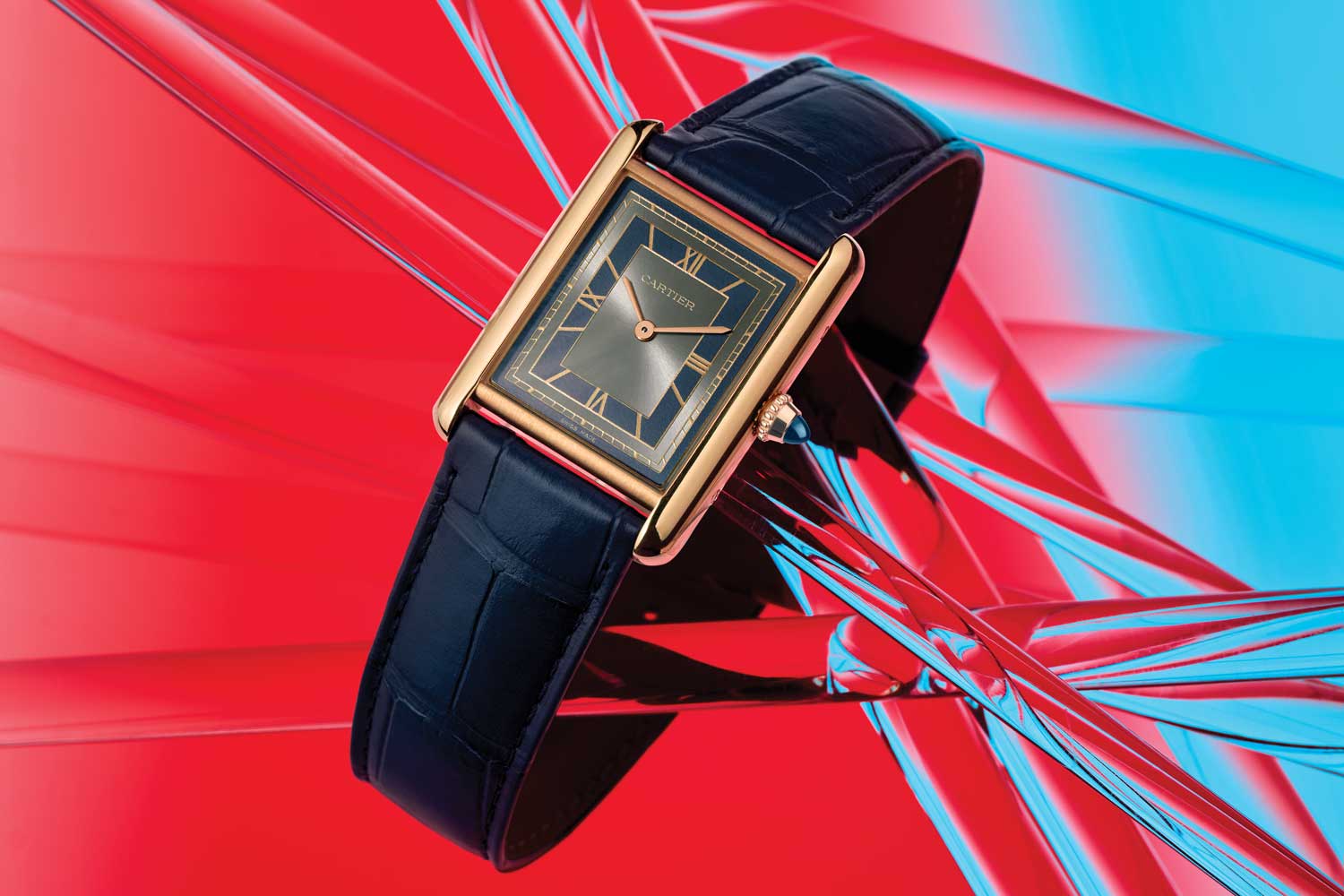
Tank Louis Cartier in 18K rose gold with manual winding caliber 1917 MC
Eternal Elegance
With the unusual square shape and the elegance of the variations and designs, it’s no mystery that the Cartier Tank has been a perennial favorite for those with taste and sophistication. The Cartier family built a dynasty on finding beauty through good times and difficult times, and their lasting legacy is in the continued fascination with the classic sophistication of this timepiece. It will forever be “the watch to wear.”










